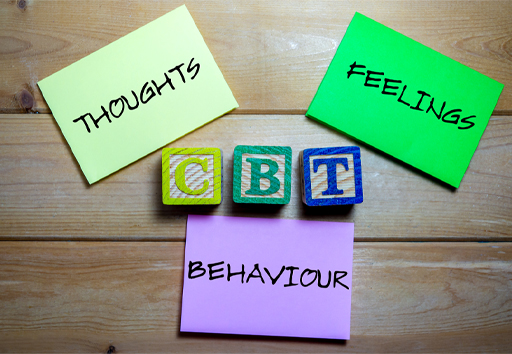2.1 Aims of cognitive behavioural therapy with young children
CBT works on the basis that an individual’s thoughts, feelings and behaviours are all interrelated. For instance, a child might struggle to manage negative (or maladaptive) thoughts, such as ruminating about their parents dying in a volcanic eruption in the UK (where these eruptions are unheard of) which then results in the child feeling sad and anxious, to the point where they frequently become tearful. This in turn results in ‘extra clingy’ behaviour where the child can even become aggressive when their mother tries to leave them for fairly short periods of time. CBT, after a thorough psychosocial assessment, would then involve supporting the child to develop more positive (or adaptive) thoughts that challenge the ruminations as well as skills (such as controlled breathing) while working with the child’s parents to employ behavioural strategies to treat the child’s anxiety.
The process usually involves a therapist working regularly with an individual child (perhaps weekly or fortnightly) often for an hour over a number of sessions. The main aim is to help modify or replace existing ‘faulty thinking’ and unhelpful behaviours, which in turn help to improve a child’s mood and improve their functioning, hence resolving or lessening the presenting problem. The focus in CBT is therefore centred on the present rather than working through an individual’s earlier life experiences (as might happen in other forms of psychotherapy).

